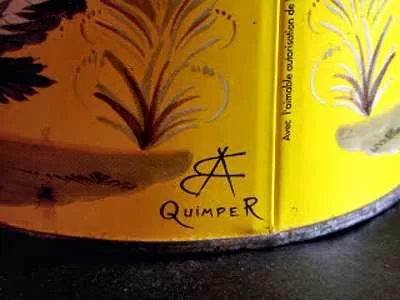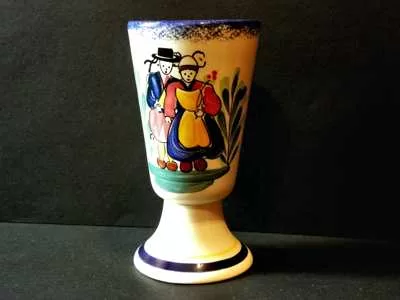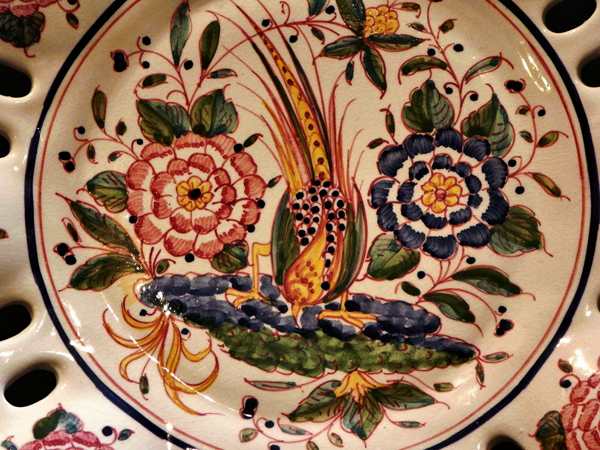Quimper pottery, with its distinct style and vibrant history, is a beloved tradition that hails from the town of Quimper in Brittany, France. Pronounced ‘kem-pair’, this unique pottery has captivated collectors and art lovers for centuries.
But what makes Quimper pottery so special? Let’s dive into its fascinating background and timeless appeal.
A Brief History of Quimper Pottery
Quimper is a town located at the confluence of the Odet and Steir rivers, in the Finistère department of Brittany. The name “Quimper” itself is derived from the Breton word kemper, meaning “confluent.” Brittany, with its rich Celtic roots, has a distinct cultural identity separate from the rest of France.

The Bretons, who settled in the region during the 5th and 6th centuries, brought with them a language closely related to Gaelic. This deep connection to Celtic heritage is reflected in many aspects of Breton culture, including its pottery.
Pottery making in Quimper dates back to the early 1700s, and it has become synonymous with tin-glazed earthenware, known in French as faience. This type of pottery, also found in other parts of Europe, is known for its opaque, glossy finish and intricate hand-painted designs.
The term faience originates from the Italian town of Faenza, a major center for pottery production during the Renaissance.
Allure of Quimper Faience
Quimper faience is celebrated for its vibrant colors and traditional Breton motifs. One of the most iconic designs is the petit Breton, which features charming, naive figures dressed in traditional Breton costumes. Men are often depicted wearing round-crowned, broad-brimmed hats, while women are shown in full skirts and aprons.

These designs evoke a sense of nostalgia and connection to the region’s cultural roots.
The production of Quimper pottery has a rich and complex history. Three main factories in Quimper—Grand Maison, Porquier, and Henriot—have been responsible for the majority of the town’s pottery. Each factory used distinctive marks, such as HB, AB, PR, HR, or HenRiot, to identify their pieces.
However, due to various buyouts, takeovers, and relaunches, these marks don’t always indicate the expected factory, adding an element of mystery and intrigue for collectors.
Quimper Pottery Beyond Brittany
While Quimper pottery is deeply rooted in Breton culture, the influence of faience extends beyond Brittany. Similar styles of pottery can be found in other regions, such as Delftware in the Netherlands and Majolica in Italy.
Even in Portugal, faience has made its mark, as evidenced by a pierced wall plate I found in a charity shop for just £1.50. This piece, labeled “Hand Painted Portugal,” highlights the widespread appeal and adaptability of this pottery style.
Whether you’re a seasoned collector or simply someone who appreciates fine craftsmanship, Quimper pottery offers a window into the rich cultural heritage of Brittany. Its charming designs, historical significance, and enduring beauty make it a treasured addition to any collection.

